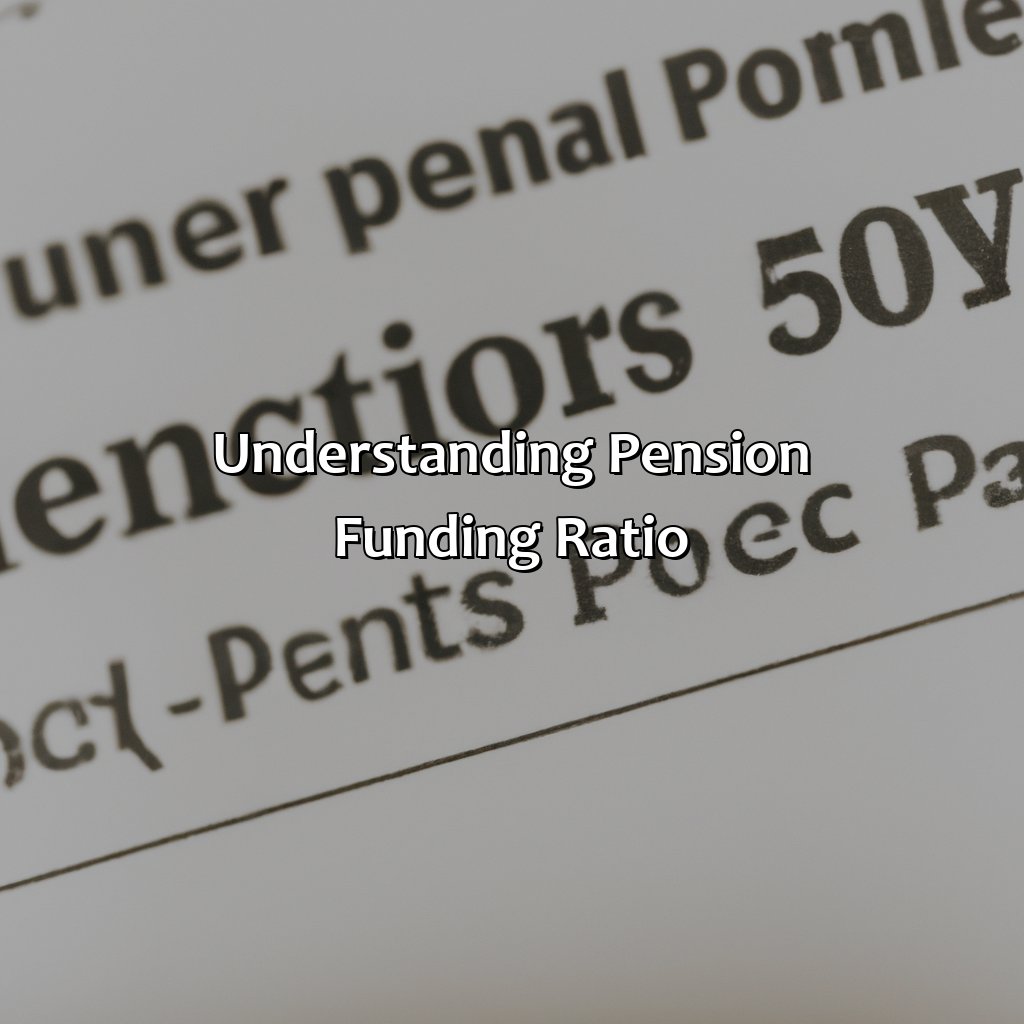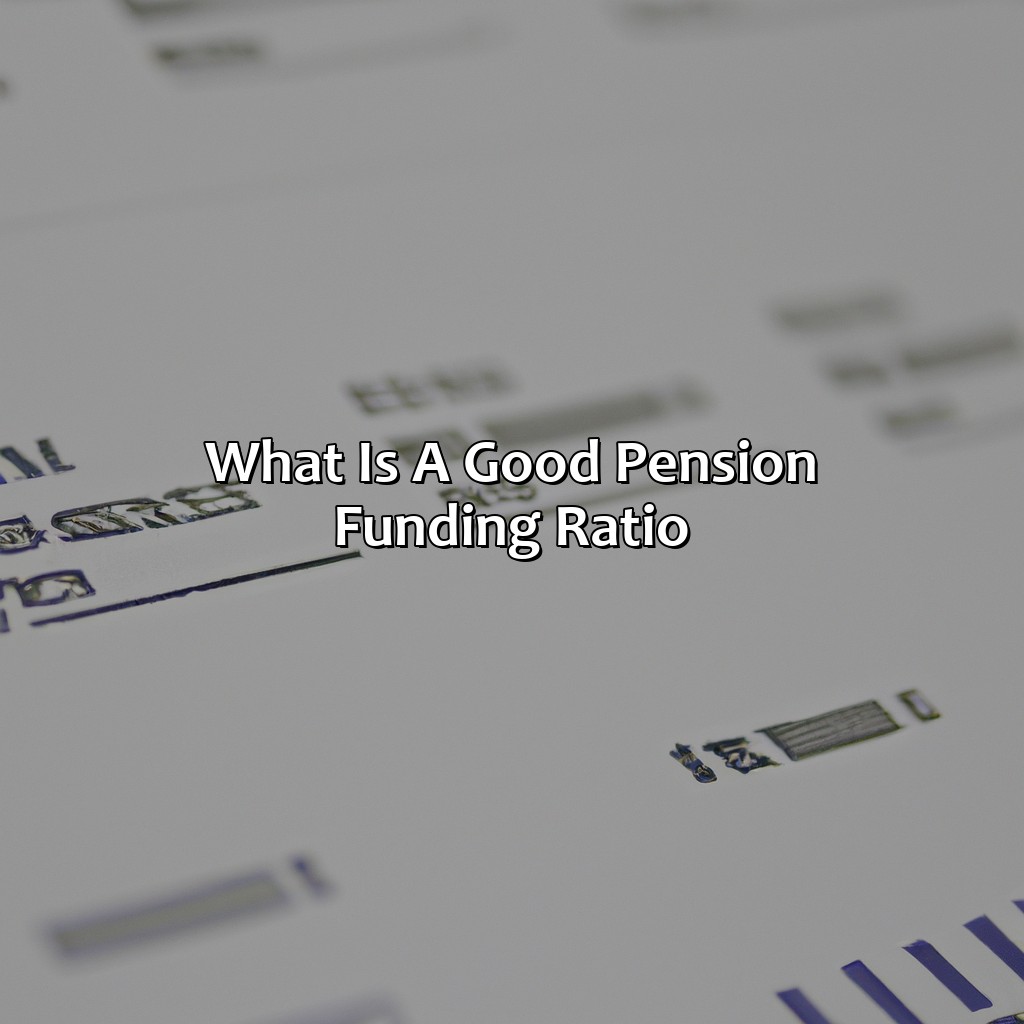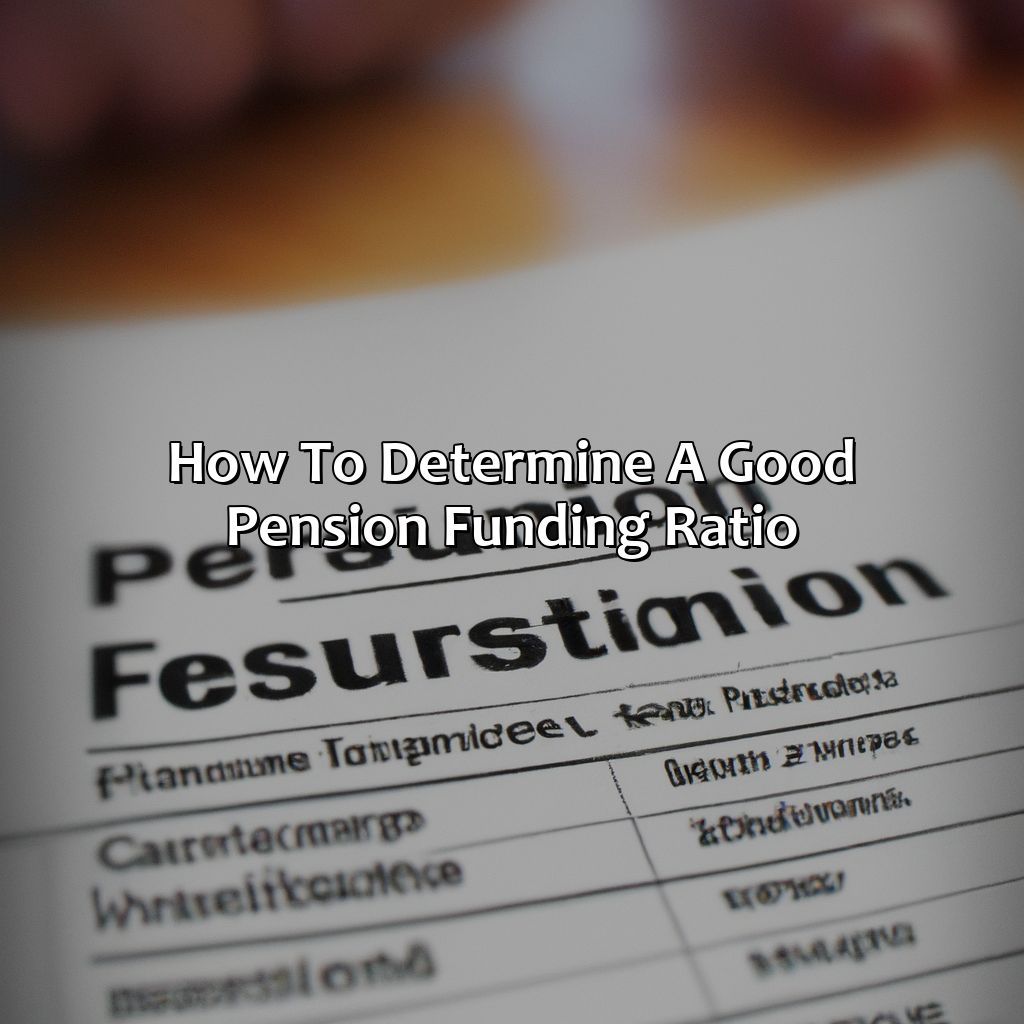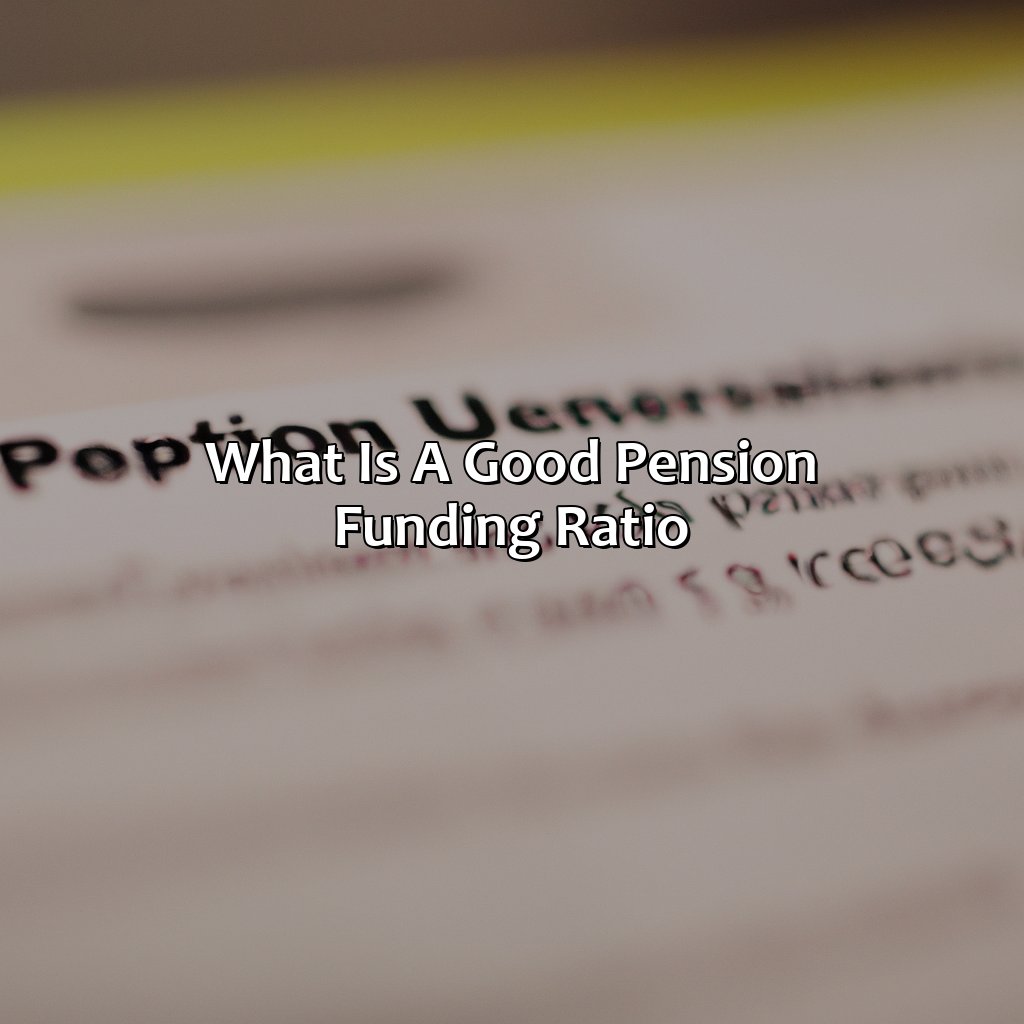What Is A Good Pension Funding Ratio?
Key Takeaway:
- A good pension funding ratio is crucial to ensure the financial health and sustainability of a pension fund. It represents the ratio of a fund’s assets to its liabilities and indicates whether or not the fund is able to meet its long-term obligations to its members.
- Several factors affect the pension funding ratio, including investment returns, contribution levels, and demographic factors such as life expectancy and retirement age. Pension funds need to carefully manage these factors to maintain a healthy funding ratio.
- Industry standards can serve as a benchmark for determining a good funding ratio. For example, most pension funds aim for a funding ratio of at least 80% to ensure that they have enough assets to cover their liabilities.
Do you want to ensure a secure future for yourself after retirement? If yes, then understanding the principles of pension funding is essential. This article explains what a good pension funding ratio is and the various methods to measure it.
Understanding Pension Funding Ratio
Pension Funding Ratio: Understanding its Significance
Pension funding ratio refers to the amount of money a pension fund has in comparison to the benefits it owes to its members. A good pension funding ratio shows that the fund has enough assets to satisfy its future obligations, thereby ensuring the financial security of its members.
If you’re wondering how long does a pension last, it depends on various factors such as your retirement age, pension type, and life expectancy. It’s important to plan ahead and make sure you have enough savings to support your retirement lifestyle.
To maintain a good pension funding ratio, the fund managers must make regular contributions and investments that generate returns. These investments should match the fund’s liabilities, taking into account factors such as the expected lifespan of its members and inflation rates.
It is essential to monitor the funding ratio regularly and take timely corrective measures to ensure that the fund stays on track. This includes making changes to the fund’s investment strategy, increasing contributions, or reducing benefits. If you’re wondering how much a widow’s pension is, it’s important to research and understand the specific policies and requirements in your country.
A good pension funding ratio is crucial not only for the financial security of members but also for the stability of the pension system itself. By maintaining a healthy ratio, pension funds can reduce the likelihood of deficits, insolvency, and the need for government bailout.
To enhance the funding ratio, pension funds must adopt a disciplined investment approach, diversify their investment portfolio, and manage risk effectively. Additionally, they must increase their transparency and accountability to members and stakeholders to engender trust and confidence in the system.

Image credits: retiregenz.com by Harry Jones
What is a Good Pension Funding Ratio?
In order to have a comfortable retirement, you must know the factors that affect the pension funding ratio. This section will talk about two sub-sections: the factors that affect the funding ratio and the importance of having a good ratio. Knowing these topics is key for a good pension funding ratio.

Image credits: retiregenz.com by Yuval Duncun
Factors Affecting Pension Funding Ratio
The elements that impact the level of pension funding ratio are numerous. Several key factors have a significant effect on the overall financial status, including demographic changes, investment returns, and liability figures. Let’s delve into these crucial considerations that have an influence on this critical measure.
Below is a table representing various influential factors that affect pension funding ratios:
| Factors Affecting Pension Funding Ratio | Examples |
|---|---|
| Investment Returns | Economic Conditions, Interest Rates |
| Demographics | Life Expectancy, Retirement Age, Mortality Rate |
| Liabilities | Benefits Paid Out, Inflation |
Beyond the aforementioned factors affecting the pension funding ratio lies the potency of government regulations and oversight responsibilities. Governments implement these rules to ensure retirement security by mitigating risks associated with volatile investment markets. Want to know how much retirement pension in Philippines? Read on!
Wondering how much pension should you have at 40?
A few years ago, my grandfather faced a significant reduction in his pension benefits due to a sharp decline in the pension fund’s accumulated assets over time. This resulted in him having insufficient funds to meet his financial needs post-retirement. It was then I realized the criticality of maintaining an adequate level of pension funding ratio to avoid any significant negative impacts on retirees’ lives.
One of the ways to ensure this is to understand the maximum pension limit and make contributions accordingly.
Pension funding ratio is like a thermometer for your retirement plans. You don’t want to find out you’ve got a fever when it’s too late.
Importance of Pension Funding Ratio
The pension funding ratio is significant in determining the financial health of a pension plan. It shows the proportion of the assets already set aside by a plan to meet future pension obligations. A high funding ratio means that there are sufficient funds to pay for future benefits, whereas a low funding ratio indicates financial instability. The importance of maintaining an optimal pension funding ratio cannot be overemphasized, as it directly affects the ability of retirees to receive regular income in their later years.
A well-funded pension scheme provides security for retirees and helps them maintain their standard of living, even in old age. A poorly funded one creates uncertainty and jeopardizes retirement savings. Maintaining a good pension funding ratio requires consistent contributions from employers and employees, investments that yield returns, and prudent management strategies.
To know more about pension for nurses, you can check average pension for a nurse.
However, certain factors can affect a plan’s funding status or alter its risk profile over time. Changes in market conditions, participant demographics, or regulatory standards can lead to fluctuations in the funding ratio. Pension managers must monitor these factors closely to ensure that the plan remains financially viable.
In 2008-2009, during the economic recession in the United States, many pensions suffered substantial losses due to falling asset values and reduced contributions from employers. This crisis exposed vulnerabilities in existing pension systems and highlighted the need for better risk management practices. Consequently, optimal financing ratios encompass different scorecards based on investment return assumptions and discount rates used by actuaries who advise retirement plans. If this methodology further assures longevity risk such as with tontines, pension funds globally could also use this construction as a supplementatorial gauge for fund valuations; improving capital adequacy measures among defined benefit schemes, which may help provide stability for workers’ retirement income streams envisioned when original designed plans laid out pensions promises some forty years ago.
The search for a good pension funding ratio is like playing hide and seek with your retirement savings – you hope they’re hiding in a good place, but you’re not too sure where to look.
How to Determine a Good Pension Funding Ratio?
To figure out the right pension funding ratio for retirement planning, industry standards can help. Analyzing and interpreting your own ratio is key. Here are some strategies to analyze ratios:
- Firstly, we’ll look at the industry standards for a ‘good’ ratio.
- Secondly, there are methods to interpret the results of the analysis.

Image credits: retiregenz.com by Harry Jones
Industry Standards for Pension Funding Ratio
Determining a good funding ratio for pensions is crucial for any company or organization that offers a pension plan. Analyzing industry standards for the pension funding ratio can provide insight into how well-funded a pension fund should be based on different factors such as company size, employee demographics, and investment strategies. Take a look at the following table providing reference to general industry standards for Pension Funding Ratio based on company sizes:
| Company Size | Standard Pension Funding Ratio |
|---|---|
| Small (1-500) | 80-85% |
| Medium (501-5K) | 85-90% |
| Large (5K & above) | 90% |
It is important to note that these numbers are not one-size-fits-all and can vary depending on individual circumstances. For instance, companies with younger workforces may have lower funding ratios while those with older employees may need higher funding ratios due to shorter investment horizons. Notably, according to the Department of Labor, only about half of private sector workers avail of employer-sponsored retirement plans in the US as of March 2020. Furthermore, monitoring and adjusting the funding ratio regularly ensures long-term financial sustainability for the pension fund. Companies must take proactive and cautious measures towards meeting their obligations. Trying to decipher a pension funding ratio is like solving a Rubik’s cube with a blindfold on.
Analyzing and Interpreting Pension Funding Ratio
When examining the evaluation and interpretation of the pension funding ratio, it is essential to analyze various ratios to identify a good pension funding level. One such measure is the funded ratio, which compares assets to liabilities, indicating whether a pension plan has sufficient resources or not.
The table below displays an analysis of pension funding ratios for a hypothetical company named ABC Corp, providing an overview of their fiscal year data for 2019:
| ABC Corp | |
|---|---|
| Funded Ratio | 87% |
| Unfunded Actuarial Liability (UAL) | $1.2 million |
| Annual Required Contribution (ARC) | $500,000 |
It is crucial to analyze a few more factors such as employee demographics, financial market conditions, inflation rates, contribution rates and discount rates in the pension valuation process to form a comprehensive understanding and strategy.
\nIt is important to know how much the old age pension is in order to make strategic decisions concerning your pension funding ratio.
A vital tip when determining the suitable pension funding ratio is – It is best to aim for at least 80% or above funded levels. However, each organization has different needs that require tailored approaches when interpreting and analyzing pension funding ratios. Learn more about how much an average pension should be.
Some Facts About a Good Pension Funding Ratio:
- ✅ A good pension funding ratio is typically between 80-120% of a pension plan’s liabilities. (Source: Investopedia)
- ✅ Pension funding ratio can be used as a measure of a pension plan’s financial health. (Source: The Balance)
- ✅ Low pension funding ratios can result in defaults and pension plan insolvency. (Source: National Conference of State Legislatures)
- ✅ Maintaining a good pension funding ratio can help ensure the long-term stability of a pension plan. (Source: Forbes)
- ✅ The funding ratio can fluctuate based on market conditions and changes in a plan’s liability assumptions. (Source: Society of Actuaries)
FAQs about What Is A Good Pension Funding Ratio?
What is a good pension funding ratio?
A good pension funding ratio is typically considered to be around 80% or higher.
Why is a good pension funding ratio important?
A good pension funding ratio is important because it indicates the ability of a pension fund to meet its future obligations to its beneficiaries.
What happens if a pension fund has a low funding ratio?
If a pension fund has a low funding ratio, it may struggle to meet its future obligations and could potentially become insolvent.
What factors can affect a pension funding ratio?
Factors that can affect a pension funding ratio include investment returns, the demographics of the pension plan’s membership, and government regulations.
How can a pension fund improve its funding ratio?
A pension fund can improve its funding ratio by increasing its investment returns, contributing more money to the fund, or reducing its obligations to its beneficiaries.
What should individuals do if they are concerned about their pension fund’s funding ratio?
Individuals who are concerned about their pension fund’s funding ratio should speak to their employer, union, or financial advisor for more information and guidance.
